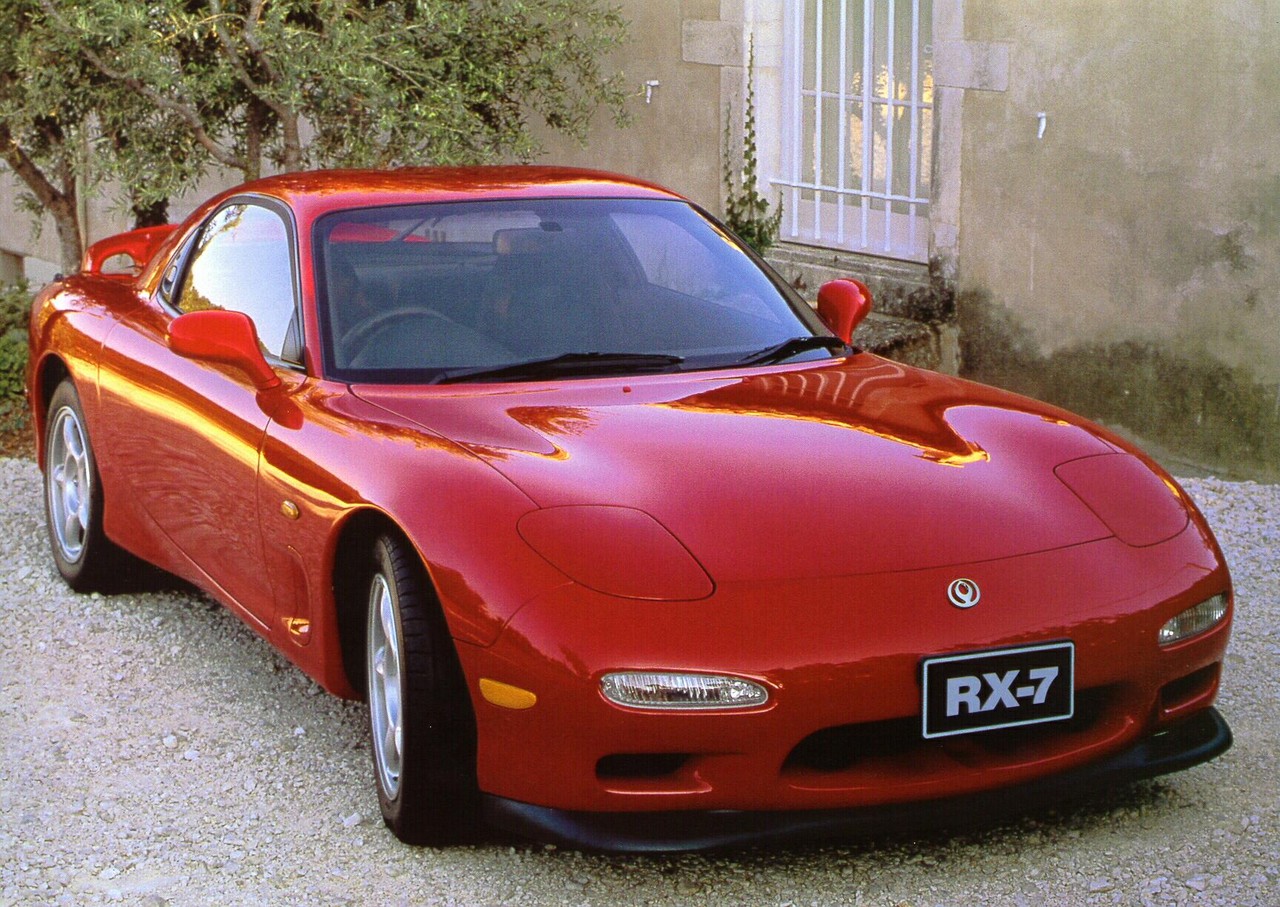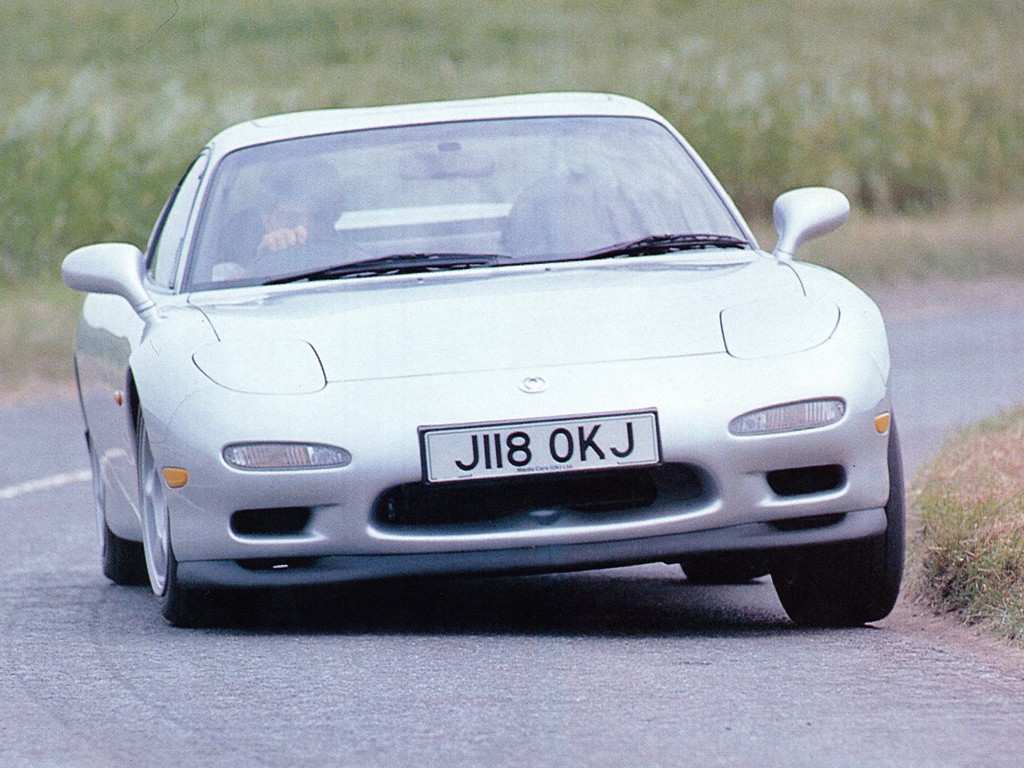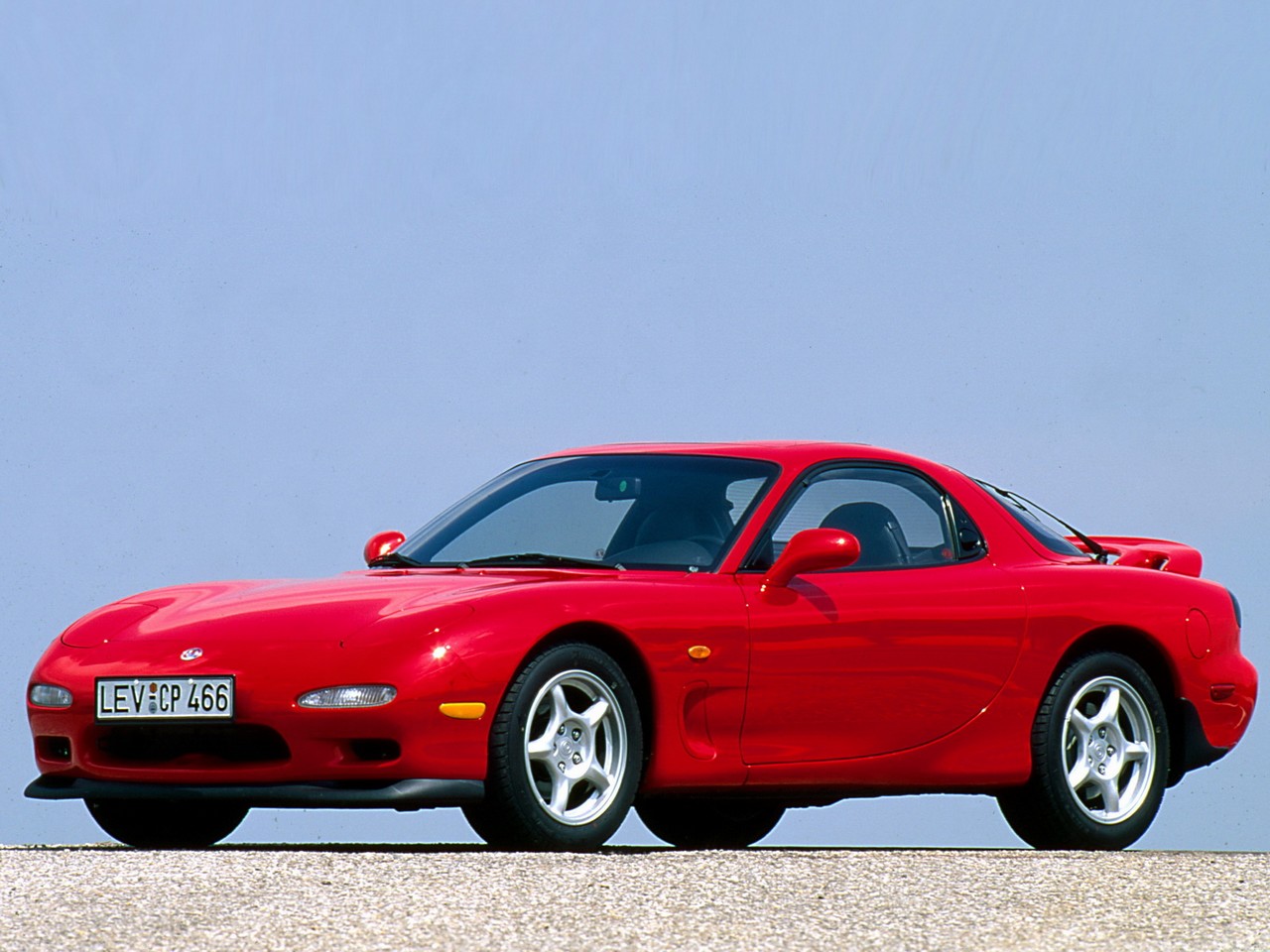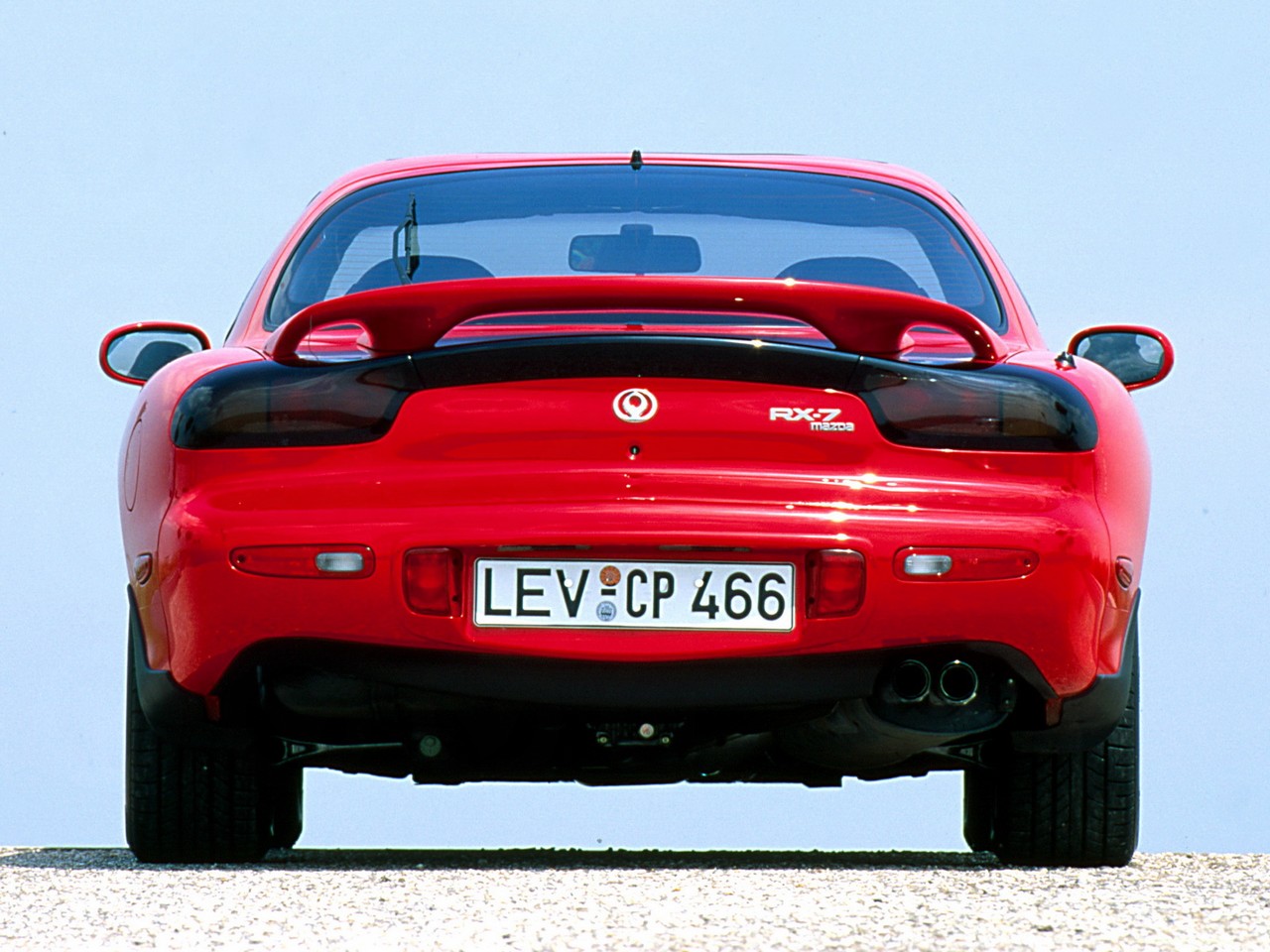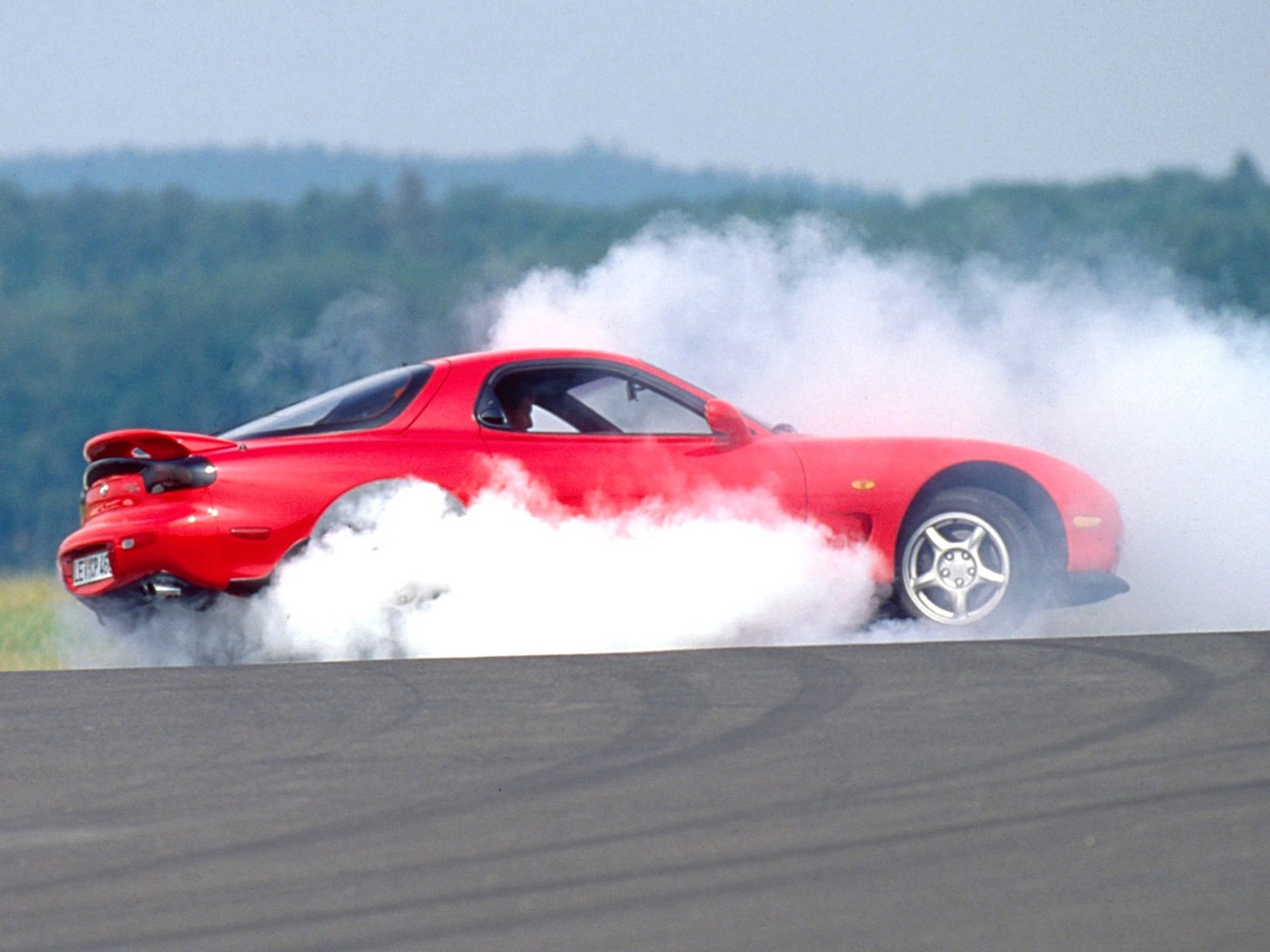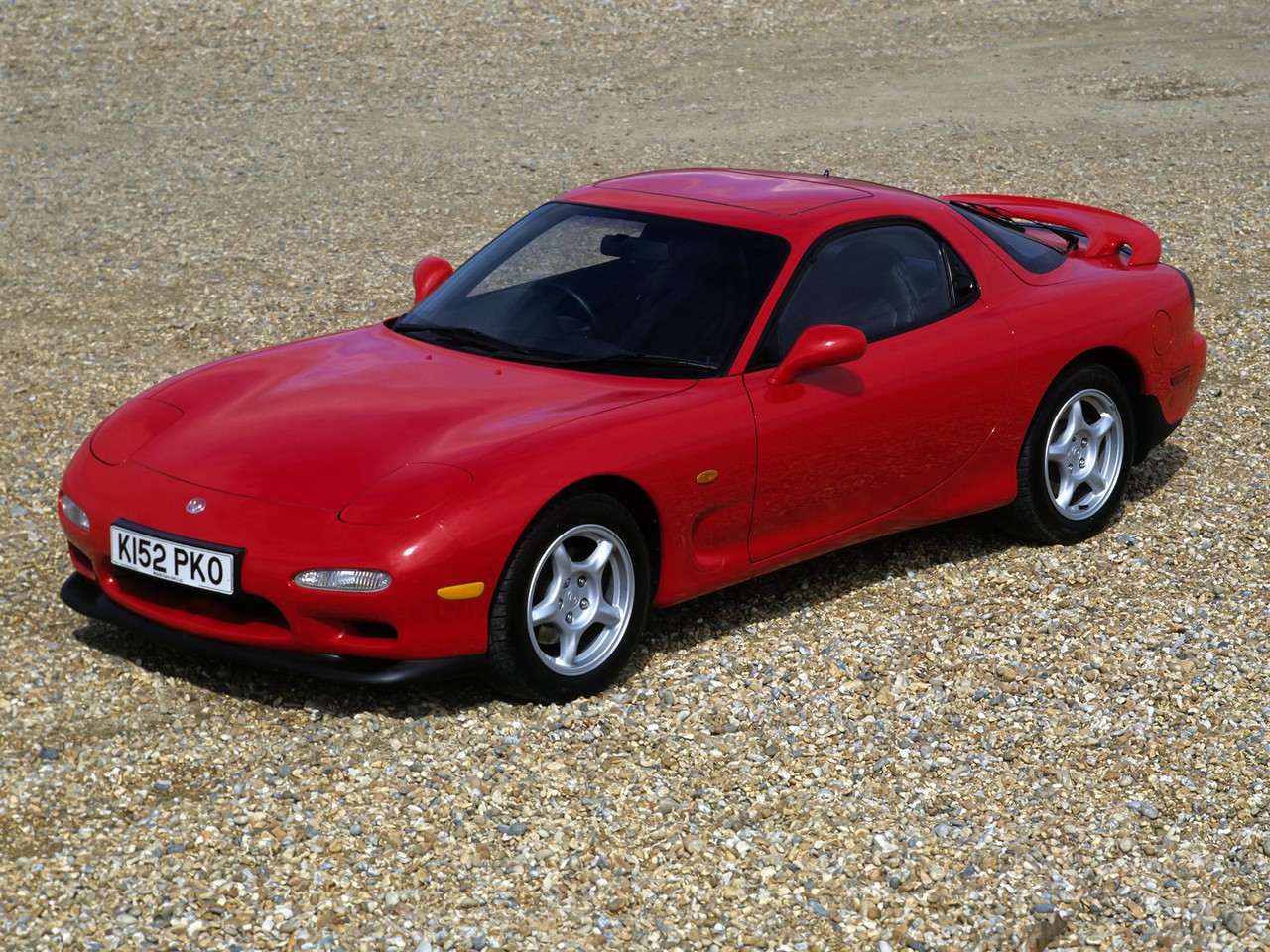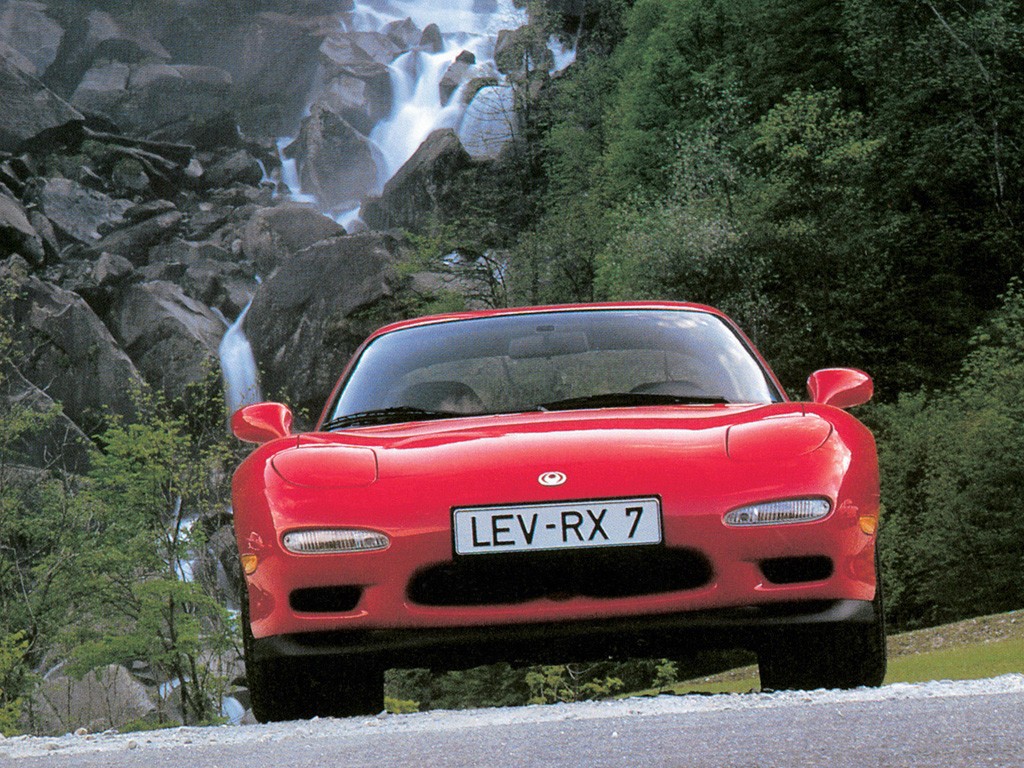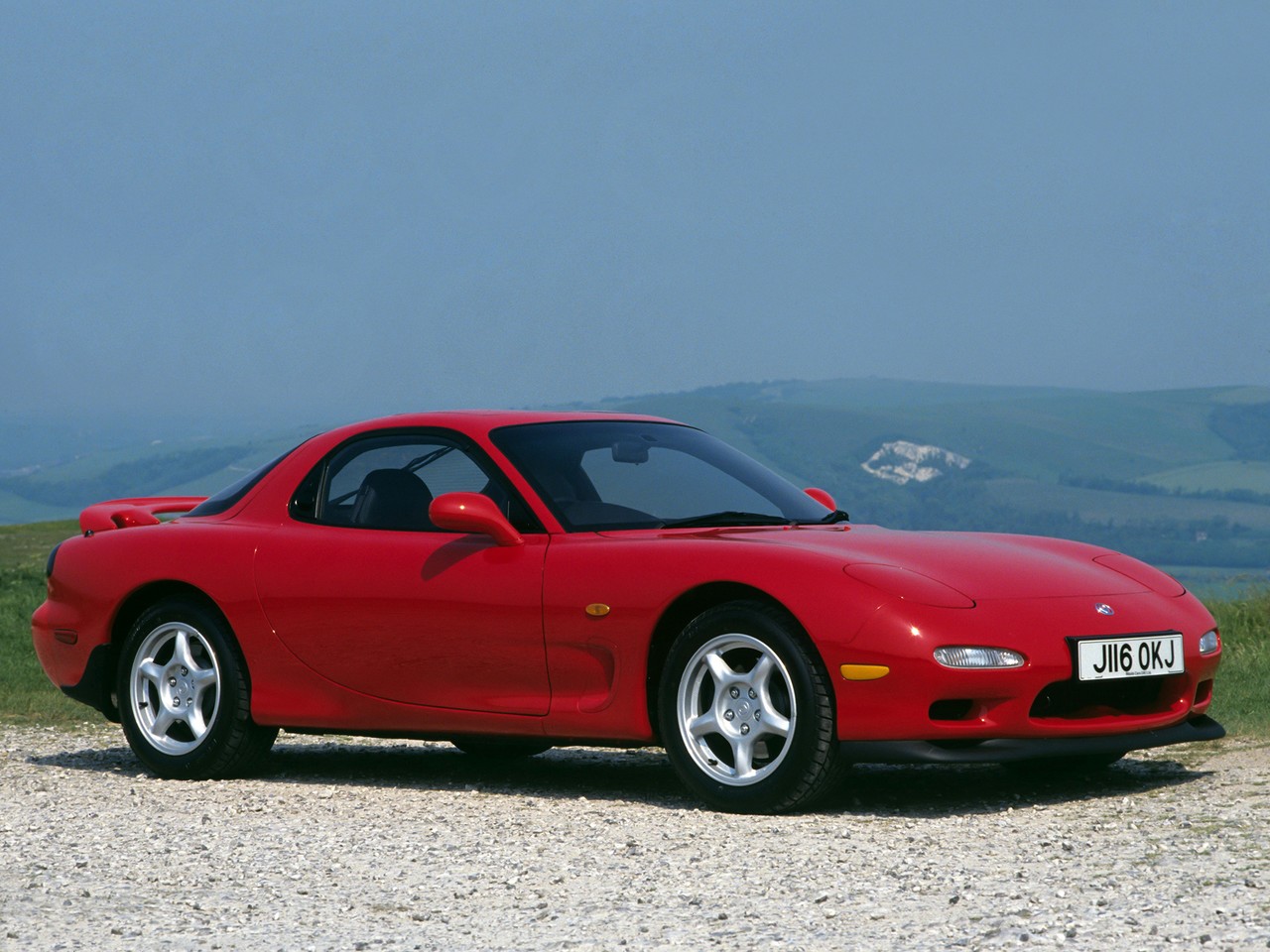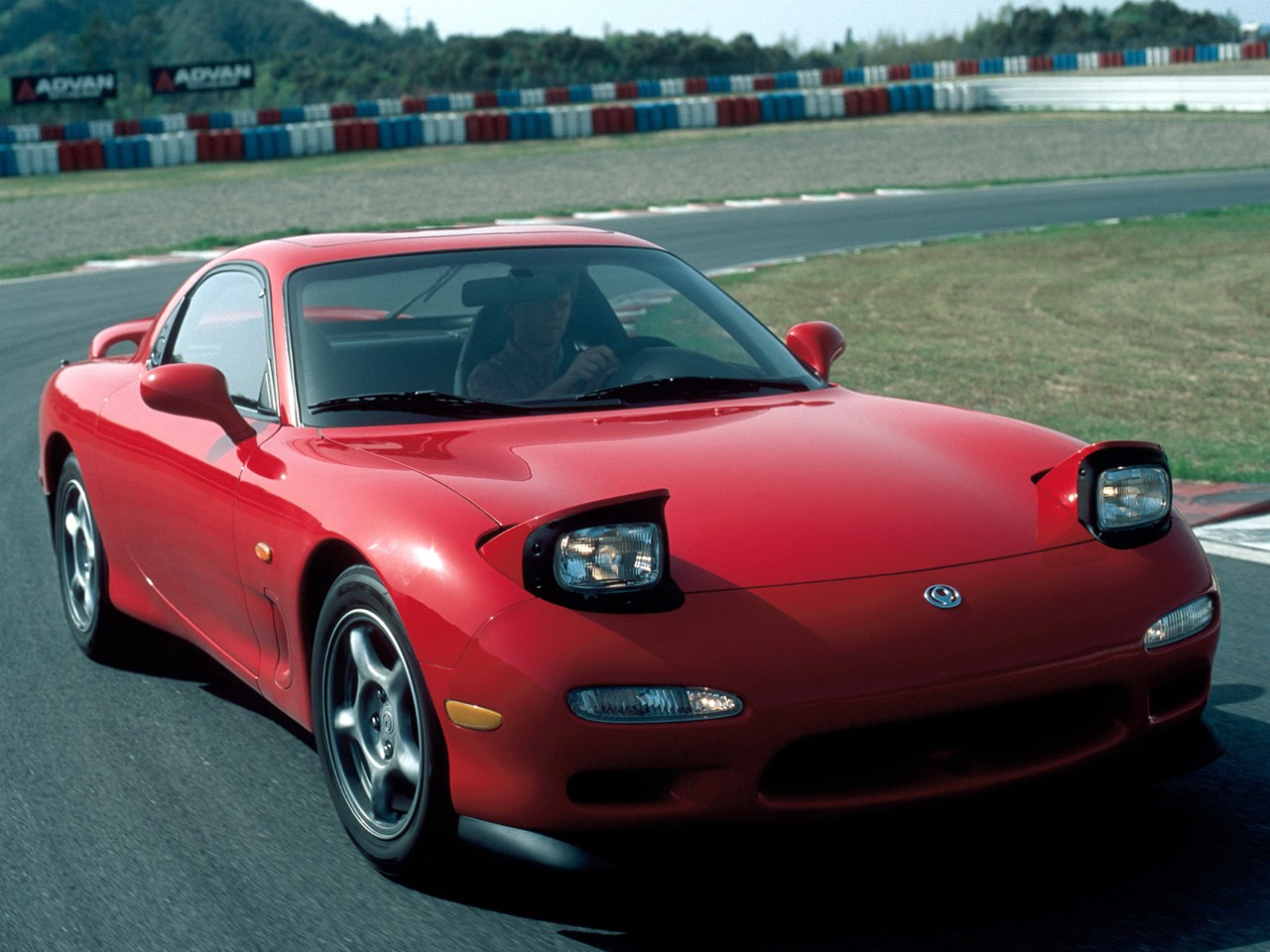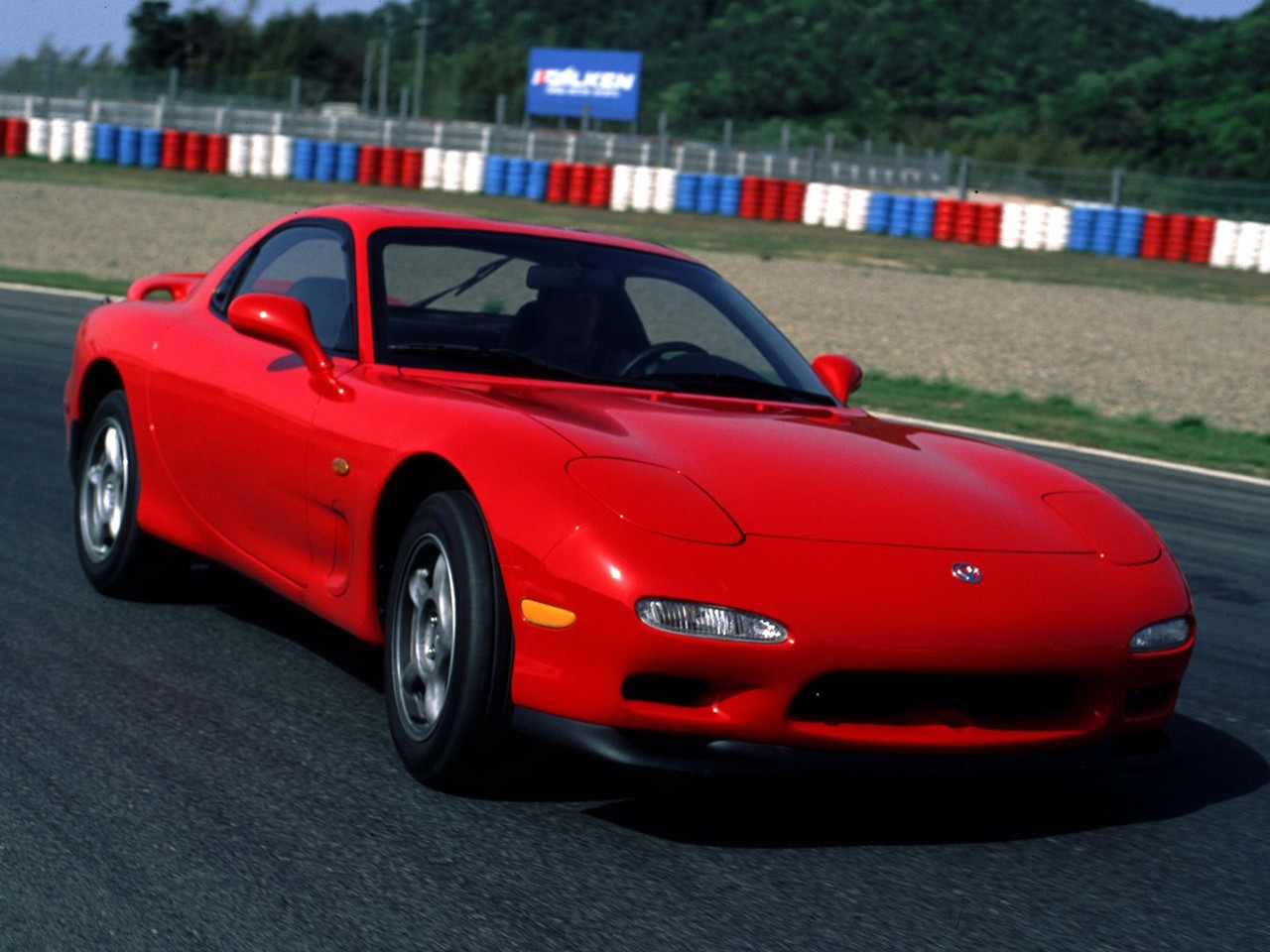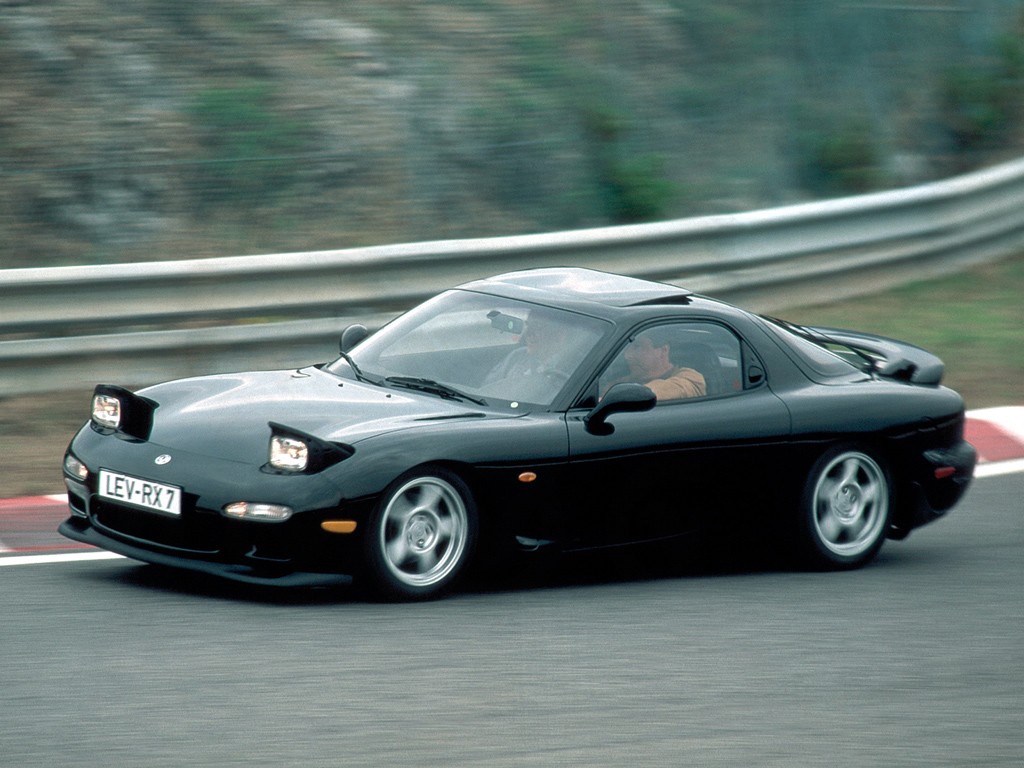
- Strong mid- and high-range performance
- Excellent dynamics
- Seductive styling
- Firm ride
- Lack of steering wheel and seat adjustment
- Cabin lacks sound insulation
- Limited cargo space
- High fuel consumption
Review: Mazda FD.VI RX-7 (1992-95)
Overview
Released in March 1992, the Mazda FD Series 6 (FD.VI) RX-7 was a two-door performance coupe. Manufactured in Hiroshima, Japan, the rear-wheel drive RX-7 was powered by Mazda’s 13B two-rotor rotary engine which was fitted with two sequential Hitachi HT12 turbochargers and an air-to-air intercooler. The first turbocharger provided 10 psi (0.7 bar) of boost from 1800 rpm and the second turbocharger was activated at 4000 rpm and also provided 10psi. A five-speed manual transmission – with double synchro mechanisms on the second and third gears – was fitted as standard.
The RX-7 was 4295 mm long, 1750 mm wide, 1230 mm tall and had a 2425 mm long wheelbase. The RX-7 had double wishbone front suspension with unequal length upper and lower arms; the rear suspension also utilised double wishbones, but with upper A-arms, lower transverse L-arms, transverse toe-control links and trailing links. For 1994 and beyond, the suspension (i.e. the springs, shock absorbers, dampers, bushes and lower arms) was revised to provide a more compliant ride.
| Years | Engine | Trans. | Peak power | Peak torque | |
|---|---|---|---|---|---|
| RX-7 | 1992-95 | 1.3-litre twin-turbo rotary | 5sp man. | 176 kW at 6500 rpm | 294 Nm at 5000 rpm |
| RX-7 SP | 1995 | 1.3-litre twin-turbo rotary | 5sp man. | 204 kW at 6500 rpm | 357 Nm at 4600 rpm |
Safety equipment
Standard safety equipment for the RX-7 consisted of a driver’s airbag and ABS.
Features
Standard features for the RX-7 included 16-inch alloy wheels, a CD player, climate control air conditioning, cruise control, leather trim, a leather wrapped steering wheel and gear shift lever, central locking, power mirrors and windows, a power sunroof and alarm system.
The RX-7 was also fitted with a Torsen limited slip differential.
1995 Mazda RX-7 SP
In April 1995, the Mazda RX-7 SP was released. The RX-7 SP was developed as a homologated road-going version of the factory race cars used in twelve-hour endurances races within Australia and production was limited to 45 vehicles. The RX-7 SP developed more power due to its larger intercooler, exhaust and modified ECU; kerb weight was also reduced by fitting a vented aluminium bonnet and Recaro race seats. Befitting its racing purposes, the RX-7 SP was also fitted with 17-inch BBS alloy wheels, larger Brembo brake discs and calipers, a carbon-fibre nose cone and rear spoiler, 120-litre carbon-fibre fuel tank and a 4.3:1 rear differential.
Review: Mazda FD.VII RX-7 (1996-98)
Overview
Released in 1996, the FD Series 7 (FD.VII) RX-7 introduced a simplified vacuum routing manifold and a 16-bit electronic control unit (ECU) for increased boost pressure and hence power. Exports to Australia ceased in 1998, though the Series 8 RX-7 continued to be produced in Japan.
| Years | Engine | Trans. | Peak power | Peak torque | |
|---|---|---|---|---|---|
| RX-7 | 1996-98 | 1.3-litre twin-turbo rotary | 5sp man. | 183 kW at 6500 rpm | 301 Nm at 5000 rpm |
Safety equipment and features
Compared to its FD.VI predecessor, standard safety equipment and features for the FD.VII RX-7 were unchanged.
Related links
